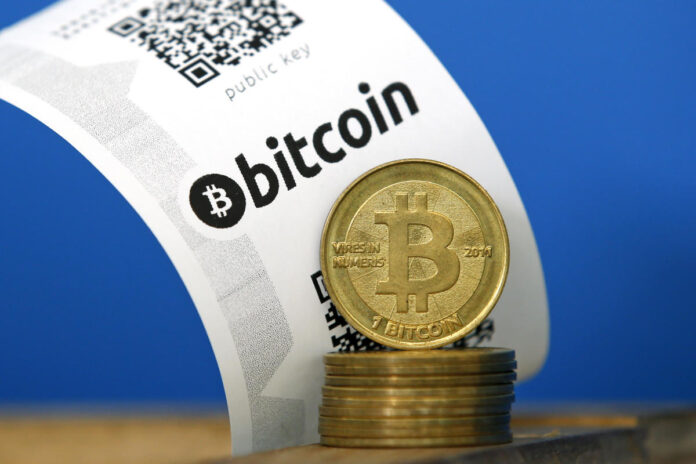
Cryptocurrencies have taken the world by storm, with Bitcoin leading the pack as the most popular and widely accepted digital currency. Its popularity has soared since its inception in 2009, with its value increasing by over 1000% in 2021 alone.
This growth has sparked immense interest in the crypto world, with many people investing in Bitcoin and other cryptocurrencies. However, with this growth come concerns about its sustainability and long-term viability. In this article, we’ll investigate the fundamentals of BTC USD growth and sustainability, beyond the hype.
The Basics of Bitcoin
Before we dive into the specifics of BTC/USD’s growth and sustainability, let’s first understand the basics of Bitcoin. Bitcoin is a decentralized digital currency that allows for peer-to-peer transactions without the need for intermediaries like banks.
Transactions are recorded on a public ledger called the blockchain, which ensures transparency and security. The maximum supply of Bitcoin is limited to 21 million, with over 18 million already in circulation.
The Growth of Bitcoin

Bitcoin’s growth can be attributed to a variety of factors, including increased adoption, increased demand, and limited supply. The pandemic has also played a role in its growth, as people turn to digital currencies for contactless payments and to protect their wealth against inflation. Furthermore, institutional adoption of Bitcoin has increased, with companies like Tesla and PayPal accepting Bitcoin as payment.
The Sustainability of Bitcoin
Bitcoin’s sustainability has been a topic of debate since its inception. One of the biggest concerns is its energy consumption, as Bitcoin mining requires significant computing power and energy.
Critics argue that the energy consumption required to mine Bitcoin is unsustainable and contributes to climate change. However, proponents argue that Bitcoin mining is becoming more energy-efficient and that the use of renewable energy sources is increasing.
Another concern is the scalability of Bitcoin, as the blockchain can only process a limited number of transactions per second. This has led to slow transaction times and high fees during periods of high demand. However, efforts are being made to improve scalability through solutions like the Lightning Network.
The Future of Bitcoin

The future of Bitcoin is uncertain, as it depends on various factors like regulation, adoption, and innovation. Regulation is a major concern as governments around the world grapple with how to regulate digital currencies. The decisions they make will undoubtedly have far-reaching effects on the global cryptocurrency market, potentially shaping the trajectory of Bitcoin’s growth and acceptance.
Increased adoption and innovation could lead to a more sustainable future for Bitcoin as more efficient and eco-friendly mining methods are developed. Furthermore, advancements in blockchain technology, like the Lightning Network, could overcome existing scalability issues. Broader acceptance of Bitcoin by businesses and consumers could also have a stabilizing effect, making Bitcoin less speculative and more integrated into the mainstream economy.
However, Bitcoin’s future will also hinge on its ability to navigate risks. These include technological hurdles, competition from other cryptocurrencies, and the possible emergence of central bank digital currencies (CBDCs). In the face of these challenges and opportunities, the course of Bitcoin’s journey remains a fascinating, ongoing story in the world of finance.
Underlying Factors Driving BTC/USD’s Growth
The astronomical growth of Bitcoin against the US dollar (BTC/USD) can be traced back to several key factors. First, the acceptance of Bitcoin as a legitimate investment asset has significantly broadened its investor base. With renowned investors and institutions publicly endorsing Bitcoin, the cryptocurrency has seen a surge in demand. Additionally, the COVID-19 pandemic’s spurring of the digitization trend has further accelerated Bitcoin’s growth, with many people viewing it as a safe haven asset against economic uncertainties.
However, the speculative nature of Bitcoin cannot be ignored. The Fear of Missing Out (FOMO) effect often drives rapid price spikes in Bitcoin as traders rush to buy in hopes of earning fast profits. This speculative bubble raises concerns about Bitcoin’s price volatility and the sustainability of its growth in the long term.
Bitcoin’s Challenges and Efforts Towards Sustainability

Despite Bitcoin’s remarkable growth, concerns about its sustainability persist. As discussed earlier, Bitcoin mining’s energy consumption is a significant concern.
The increased network traffic, coupled with the computational complexity of mining, leads to high energy consumption, thus adversely impacting the area being made to address this issue, with a push towards more sustainable and renewable energy sources for Bitcoin mining.
Additionally, the introduction of advanced consensus algorithms such as Proof of Stake (PoS) in some cryptocurrencies, which is more energy-efficient than Bitcoin’s Proof of Work (PoW), showcases the possibility of more sustainable cryptocurrency systems.
Regulation and its Role in the Future of Bitcoin
The lack of regulatory clarity poses a significant risk to Bitcoin’s future. Governments worldwide are still grappling with creating a legal framework that could balance innovation and economic opportunities with the risks and challenges that cryptocurrencies pose.
Regulation could potentially curb some of the volatility seen in Bitcoin markets by eliminating fraudulent activities and providing a safety net for investors. It could also encourage broader adoption by establishing legal clarity. However, excessive regulation might stifle innovation and potentially harm the decentralized nature of Bitcoin.
Future Predictions and Implications for BTC/USD

Based on current trends and developments, Bitcoin is likely to continue to grow and gain mainstream acceptance. However, the path to a sustainable future is fraught with challenges. Innovations such as the Lightning Network to improve scalability and the push towards energy-efficient consensus mechanisms suggest a commitment to addressing these issues.
Regulation will undoubtedly play a critical role in shaping Bitcoin’s future, and its impact largely depends on the balance that authorities can strike between fostering growth and managing risks. In conclusion, while BTC/USD growth has been impressive, it’s essential to move beyond the hype and focus on creating a sustainable and secure ecosystem for Bitcoin to continue to thrive.
Conclusion
In conclusion, the growth and sustainability of BTC and USD are complex issues that cannot be fully understood without considering the broader context of the cryptocurrency world. While Bitcoin’s growth is impressive, concerns about its sustainability remain. It is important to continue investigating the fundamentals of BTC’s and USD’s growth and sustainability to ensure that the future of digital currencies is secure and sustainable.
















